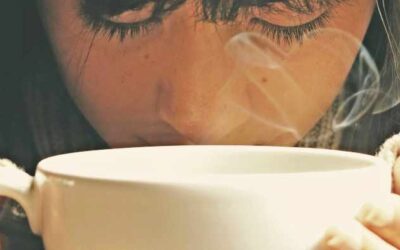by Brent Hearn •
Have you ever stopped to consider how many of your waking hours are spent sitting? For far too many of us—even those of us who consider ourselves fairly active—that number can be surprising.
Think about it. If you work in an office, once you’re out the door, the majority of your day is a race from one prolonged bout of sitting to the next. You sit during your commute to work…you sit at your desk…you sit in meetings…you sit during lunch…you sit during the commute back home…you sit during dinner…and finally, you end an exhausting day of sitting on your keister by sitting in front of your television, laptop, tablet, phone, or gaming console. It’s a miracle our bodies even remember how to stand, what with all that sitting.
As it turns out, our bodies just were not meant to remain stationary for as long as we’ve become accustomed to keeping them that way. There was a time when daily life demanded more activity from even the most industrialized populations. If you wanted to eat, food needed to be harvested. If you wanted to drink, water had to be collected. But as combines and tractors gave way to DoorDash, well water was replaced with in-refrigerator filters, and humanity was introduced to the seductive joy of watching pixels dance on a screen, we just…stopped…moving.
With the many other dangers in today’s world, it can be easy to dismiss something so seemingly innocuous as sitting. But we do so at our own peril. Many of us are slowly but surely sitting ourselves to death.
What All That Sitting Does to Us
Excessive sitting can be a contributing risk factor for a variety of diseases and health issues, including:
- heart disease
- obesity
- diabetes
- osteoporosis
- cancer
- vascular issues, including deep vein thrombosis (DVT)
- lower back and spine problems
- gluteal amnesia (“dead butt syndrome”)
What to Do About It
It’s not as if we must stop sitting completely. Spending too much time standing comes with its own risk factors. The idea is to reduce excessive sitting, to work healthy activity into our daily routines in meaningful ways, and to get (and keep) the blood flowing.
- Modify your workstation
A standing desk, a sit-to-stand desk, a treadmill desk, or even a high counter can help reduce the amount of time spent sitting at work.
- Make excuses to stand during your workday
Whether it’s refilling your water bottle, taking a short walk on your lunch break, choosing to stand during your subway commute, or walking to a coworker’s desk rather than firing off an email, look for ways to get on your feet.
- Make time on your feet at home
The same thing goes for your time at home. Remember: you don’t have to sit while you’re watching TV, having a snack, or talking with your spouse. Ask yourself, “Could what I’m doing right now be done while standing? Or walking?” Again, you don’t have to be on your feet all the time; just look for ways to be on your feet more often.
- Gamify it!
Even the most well-intentioned among us can simply forget to get off our hineys. If it helps, use a smartwatch or an app to close those rings and whatnot. Not to put too fine a point on it, but do whatever it takes, people.
At the end of the day, it all comes down to this: Are you going to throw away your single precious life sitting on the sidelines? Or are you going to stake your claim on the full, healthy, active life that’s waiting for you by taking a stand?
Sources
Mayo Clinic: What are the risks of sitting too much?
Yale Medicine: Why Is Sitting so Bad for Us?
Cleveland Clinic: Are Standing Desks Better for You?
Michigan Health: Are You at Risk for Dead Butt Syndrome?









 ▶︎
▶︎  Why is the Discount Challenge prize amount $15,024? Because that is the average “per-occurrence” fine for Medicare inducements. That’s not $15,024 per patient, that’s not per provider, that’s PER VISIT. Stinks, doesn’t it? To us, the prize amount is worth the investment if we can help our profession better understand proper discounting.
Why is the Discount Challenge prize amount $15,024? Because that is the average “per-occurrence” fine for Medicare inducements. That’s not $15,024 per patient, that’s not per provider, that’s PER VISIT. Stinks, doesn’t it? To us, the prize amount is worth the investment if we can help our profession better understand proper discounting.